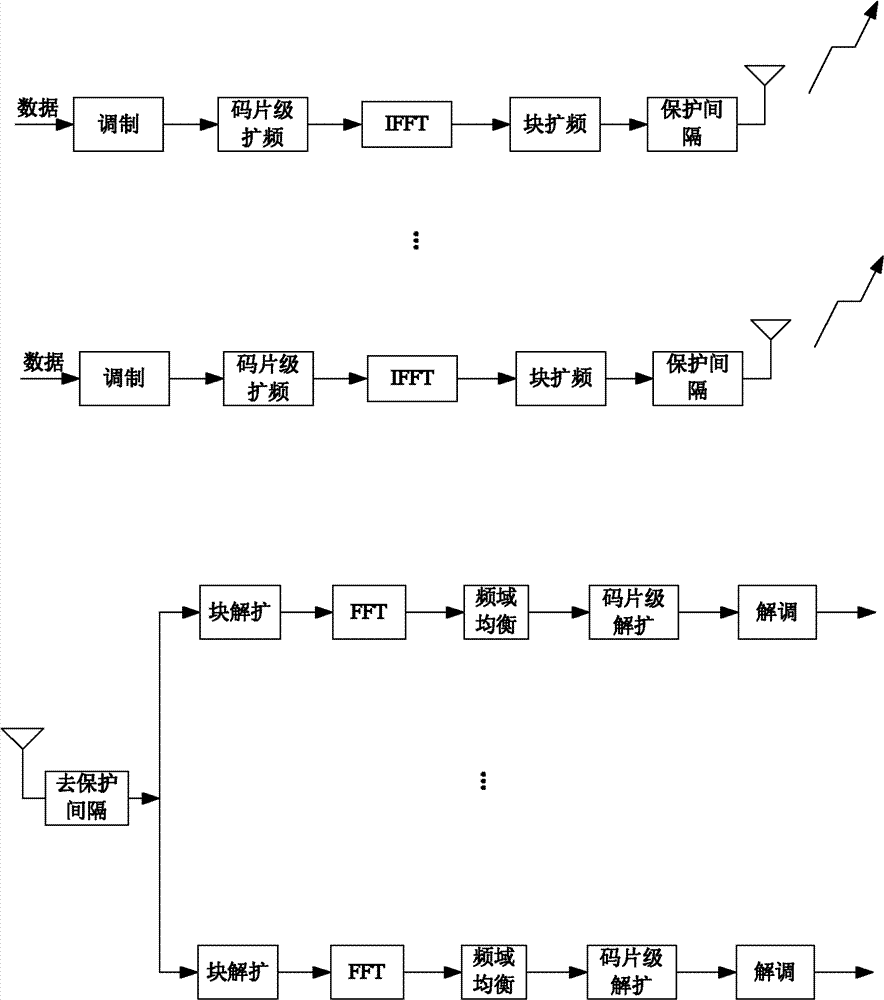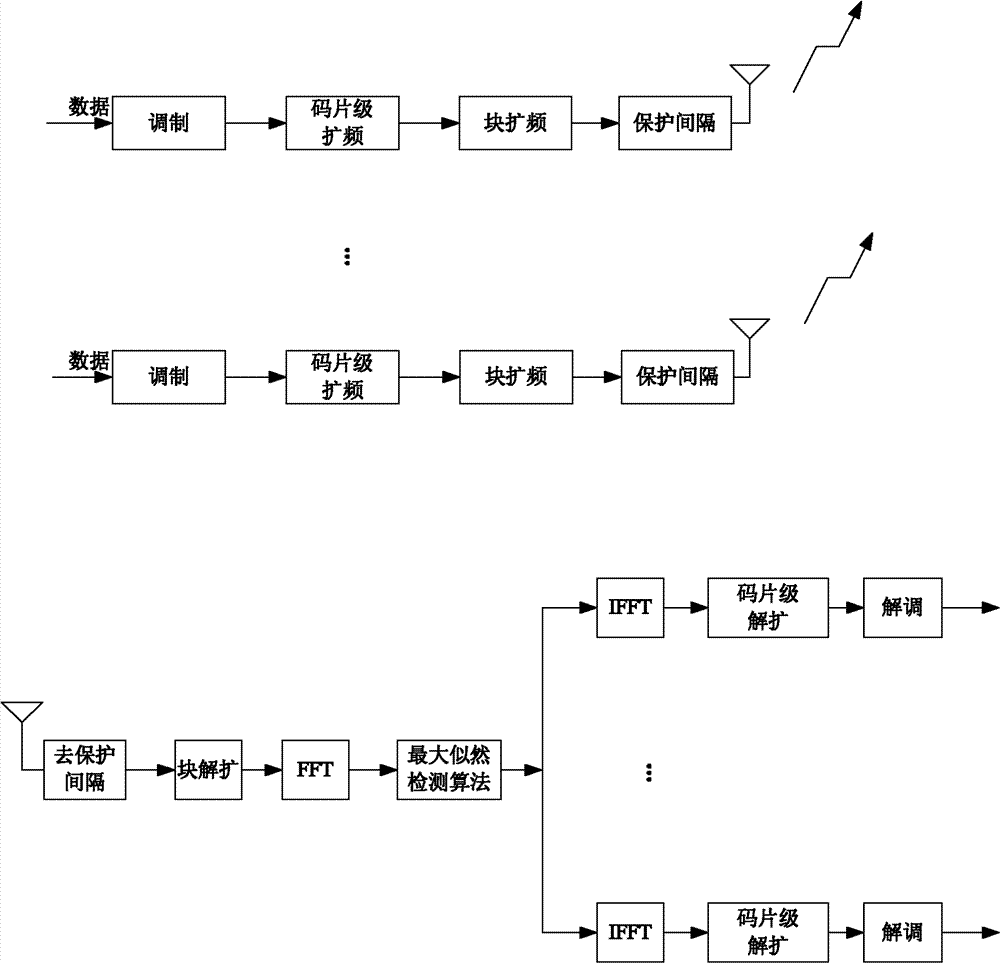Method for suppressing residual multi-user interference in two-dimensional block spread spectrum system based on maximum likelihood detection
A technology of maximum likelihood detection and multi-user interference, applied in the field of communication, can solve the problem of residual multi-user interference in two-dimensional block spread spectrum system, so as to improve residual multi-user interference, optimize transmission performance, and suppress residual multi-user interference. effect of the signal
- Summary
- Abstract
- Description
- Claims
- Application Information
AI Technical Summary
Problems solved by technology
Method used
Image
Examples
specific Embodiment approach 1
[0042] Specific implementation mode one: the following combination image 3 Describe this embodiment, this embodiment is based on the residual multi-user interference suppression method in the two-dimensional block spread spectrum system of maximum likelihood detection, under the SC-CDMA system:
[0043] Launch process:
[0044] Step 1, respectively performing chip-level spread spectrum on the U-channel modulated signal to obtain the signal after U-channel chip-level spread spectrum;
[0045] Step 2, carry out block spread spectrum respectively to the signal after U chip-level spread spectrum obtained in step 1, obtain the signal after U block spread spectrum;
[0046] Step 3, adding the U-channel block-spread signals obtained in step 2 into guard interval processing respectively, obtaining the processed U-channel signal, and transmitting to the channel through the transmitting antenna;
[0047] Receiving process:
[0048] Step 4, using the receiving antenna to connect the ...
specific Embodiment approach 2
[0056] Specific implementation mode two: the following combination Figure 4 to Figure 6 Describe this embodiment, this embodiment is based on the residual multi-user interference suppression method in the two-dimensional block spread spectrum system of maximum likelihood detection, under the MC-CDMA system:
[0057] Launch process:
[0058] Step 1, respectively performing chip-level spread spectrum on the U-channel modulated signal to obtain the signal after U-channel chip-level spread spectrum;
[0059] Step 2, performing inverse fast Fourier transform on the U-channel chip-level spread-spectrum signal obtained in step 1, respectively, to obtain the time-domain signal after the U-channel transform;
[0060]Step 3, performing block spread spectrum respectively on the time-domain signal after U channel transformation obtained in step 2, to obtain the signal after U channel block spread spectrum;
[0061] Step 4, add the U-channel block-spread signals obtained in step 3 to gu...
PUM
 Login to View More
Login to View More Abstract
Description
Claims
Application Information
 Login to View More
Login to View More - R&D
- Intellectual Property
- Life Sciences
- Materials
- Tech Scout
- Unparalleled Data Quality
- Higher Quality Content
- 60% Fewer Hallucinations
Browse by: Latest US Patents, China's latest patents, Technical Efficacy Thesaurus, Application Domain, Technology Topic, Popular Technical Reports.
© 2025 PatSnap. All rights reserved.Legal|Privacy policy|Modern Slavery Act Transparency Statement|Sitemap|About US| Contact US: help@patsnap.com



